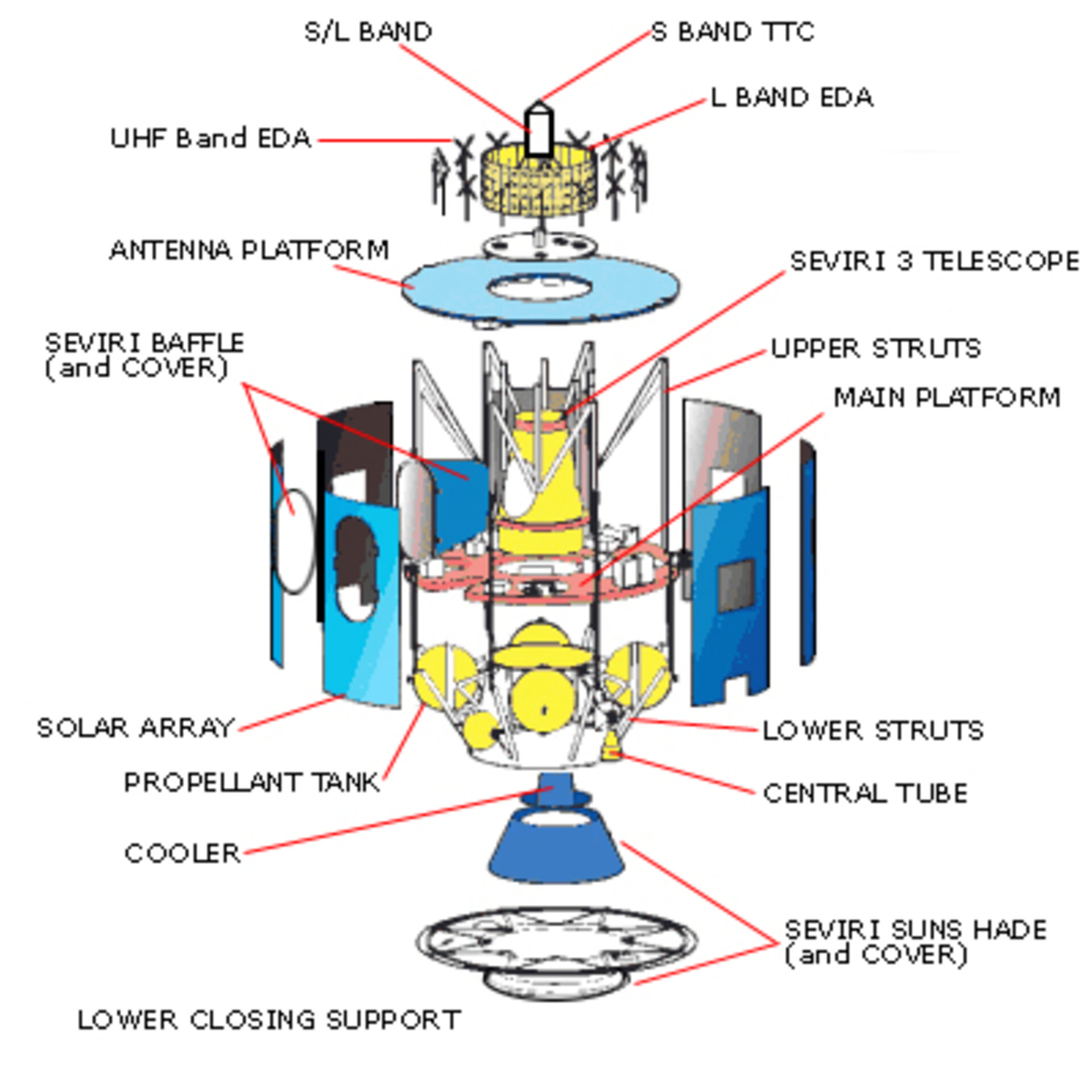Satellite Architecture
Satellite propulsion
The MSG propulsion system inherits the unified bi-propellant system already proven on communication satellites and some scientific missions. It includes:
- 4 propellant tanks providing a large storage capacity (up to 965 kg of propellant)
- 2 helium pressurant tanks
- 2 liquid fuelled apogee motors each giving 400 N thrust for apogee manoeuvres in transfer/drift orbits
- 6 reaction-control thrusters for fine orbital manoeuvres, attitude acquisition and maintenance

Satellite Attitude and Orbit Control System AOCS
The MSG AOCS is designed on a minimum-complexity basis. It takes full advantage of the Meteosat experience, and the fact that the spinner concept provides gyroscopic stability. The onboard real time operations provide:
- attitude sensor processing and spin rate determination
- attitude and orbit manoeuvre synchronization
- active nutation damping
The sensors comprise Sun slit sensors, Earth horizon crossing sensors, and accelerometers.
Solar panels
The MSG solar array is built from eight curved panels (2.4 m high and 1.25 m wide) linked in a drum skirt around the satellite body. One of the panels has a cut-out for the instrument aperture. The array is dimensioned to deliver about 720 W of power at equinox after seven years in orbit. Two Nickel-Cadmium batteries are available for eclipse periods.






